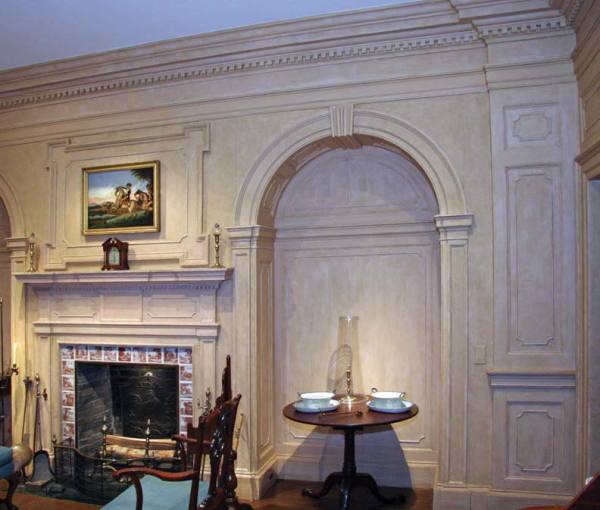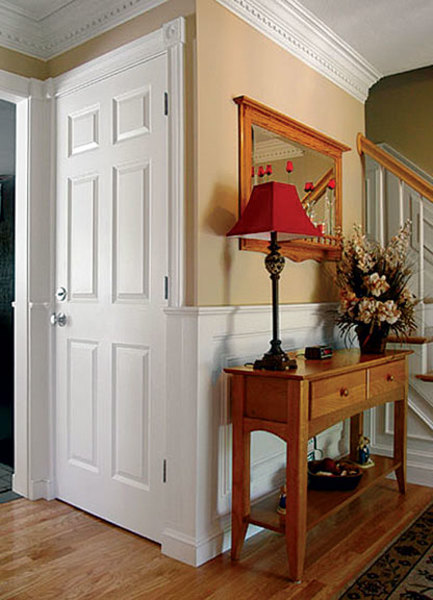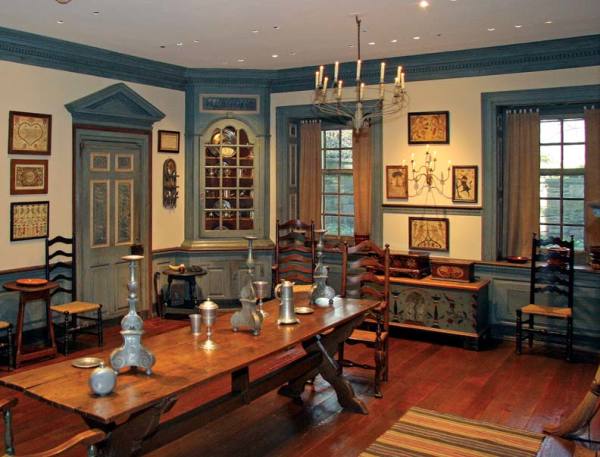The Caryatids from the Erechtheion at the Acropolis highlight the human body’s close ties to proportions in the classical orders. (Photo: Dimitrios/Fotolia.com)
Ever wonder why you like old houses? Maybe there’s a certain room from your grandmother’s house that evokes fond memories, but you can’t pinpoint why it was so special. Often, the reason is because it was built and designed using classical proportions and scale, something lacking in modern houses. A century ago, builders, craftsmen, architects, and designers knew something that’s been mostly forgotten today: the rules of classical design. Before the age of production houses, everyone involved in the craft of building homes understood and designed using classical rules on everything from porches to interior trim. Classical details were understood and natural, whether in a Georgian home or a Victorian mansion. In order to perform proper restoration work today, it’s important to understand these classical rules—they’re crucial to good design, and for getting missing details right in a historic house.
Classical Primer
The classical rules of design and proportion were established by the Greeks and Romans, and reaffirmed during the Renaissance. The Greeks (and then the Romans) looked to nature and man as a model for design, discovering in both places a proportion so perfect they called it the golden ratio. It is best realized in the golden rectangle, a mathematical ratio of roughly 3:5. Our bodies are full of golden rectangles: the length of the hand to length of the forearm is one example. The height of your belly button to your total height is often a golden ratio.
From its cornice to its base moldings, the Lancaster room at Winterthur is fully articulated in classical details. (Photo: Courtesy of Winterthur Museum)
The human body is an amazing proportional study of beauty and scale. The Greeks and Romans understood this and designed their proportioning system around it. Each of the five orders (Tuscan, Doric, Ionic, Corinthian, and Composite) is based on a human scale, usually represented in the height and width of the column. For example, the very similar Tuscan and Doric orders have a 1:7 ratio, where one equals the column width and seven is the height. These orders are usually referred to as masculine because they have male proportions. (Not coincidentally, my foot is 11″ long and I am almost 77″ tall—a 1:7 ratio.) The Ionic and Corinthian orders are based on women’s bodies, with smaller proportions—1:8 and 1:9, respectively. Caryatids—entablature-topped female sculptures that serve as columns, such as those found at the Acropolis in Athens—provide the best visual tie between the human body and the classical proportion system.
Vetruvius, the Roman engineer and writer of the only architectural book we have from antiquity, wrote about the gender-specific personalities of the different orders. One reason we feel so comfortable in classical rooms is because they are designed and laid out on a human scale. Often when we like a room and can’t explain why, it’s because it’s been laid out using these classical rules, making us feel naturally more comfortable there.
Molding Mindset
A chair rail at the proper classical height feels nice and comfortable. (Photo: Brent Hull)
Before 1940, all the moldings in a room were laid out according to a classical scale. The height of a wainscot or chair rail, the placement of a picture mold, and certainly all the moldings in a room displayed classical proportions.
If your trim has gone missing and you’ve ever wondered about the height of your base or the placement of your chair rail, you can always know what’s right by studying the classical rules.
By contrast, a chair rail that’s too high feels off-putting. (Photo: Brent Hull)
But first, forget one rule you may have picked up: Never establish the height of the chair rail by measuring the back of your chairs. This is the fastest way to mess up a room’s architectural feel and destroy its form. The classical system is interrelated—the base, crown, and casing are all proportional. The height of a chair, while a seemingly functional solution, has nothing to do with the scale or architecture of the room.
Also, keep in mind that traditional chair rail heights don’t apply to functional rooms in historic houses, like bathrooms and kitchens. Cleanliness and sanitation were important in these work and service areas, so chair rails were often as high as 4′ or 5′. Think of a kitchen backsplash: If your countertops are 36″ high, a 4′ to 5′ wainscot makes sense because sloshing water shouldn’t get much higher than a foot over the counter.
Rules for Success
A number of quick rules can help determine an appropriate height for a chair rail. These aren’t set in stone, but they’re a good starting point.
Colonial-style rooms typically have wainscoting or chair rails aligned with the window sills. (Photo: Courtesy of Winterthur Museum)
1. It’s never 3′. This is the classical rule that’s broken most often when installing a chair rail. Architecturally speaking, your ceiling would need to be at least 12′ tall (or up to 15′ tall) in order for the chair rail wainscot to be 3′ off the ground. In most American houses with 8′ to 10′ ceilings, a 3′ chair rail height is wrong.
2. The chair rail should ground the room. It should act as a proportional divider that actually makes the ceiling feel taller. In most 8′- to 10′-tall rooms, a chair rail should be somewhere between 28″ and 32″ from the floor. This height will be based on other architectural elements in the room that may need to be tied together (see below).
3. Often, the chair rail should be at the height of the window sill. This is especially true in classical- or colonial-style homes, where rooms are tied together architecturally with moldings. When window and door moldings connect nicely, the room appears more organized and composed, and is more pleasing to the eye. This treatment is very common in period colonial rooms like those at Winterthur.
Brent Hull is the owner of the millwork company Hull Works and a co-author of Traditional American Rooms (Fox Chapel, 2009).







